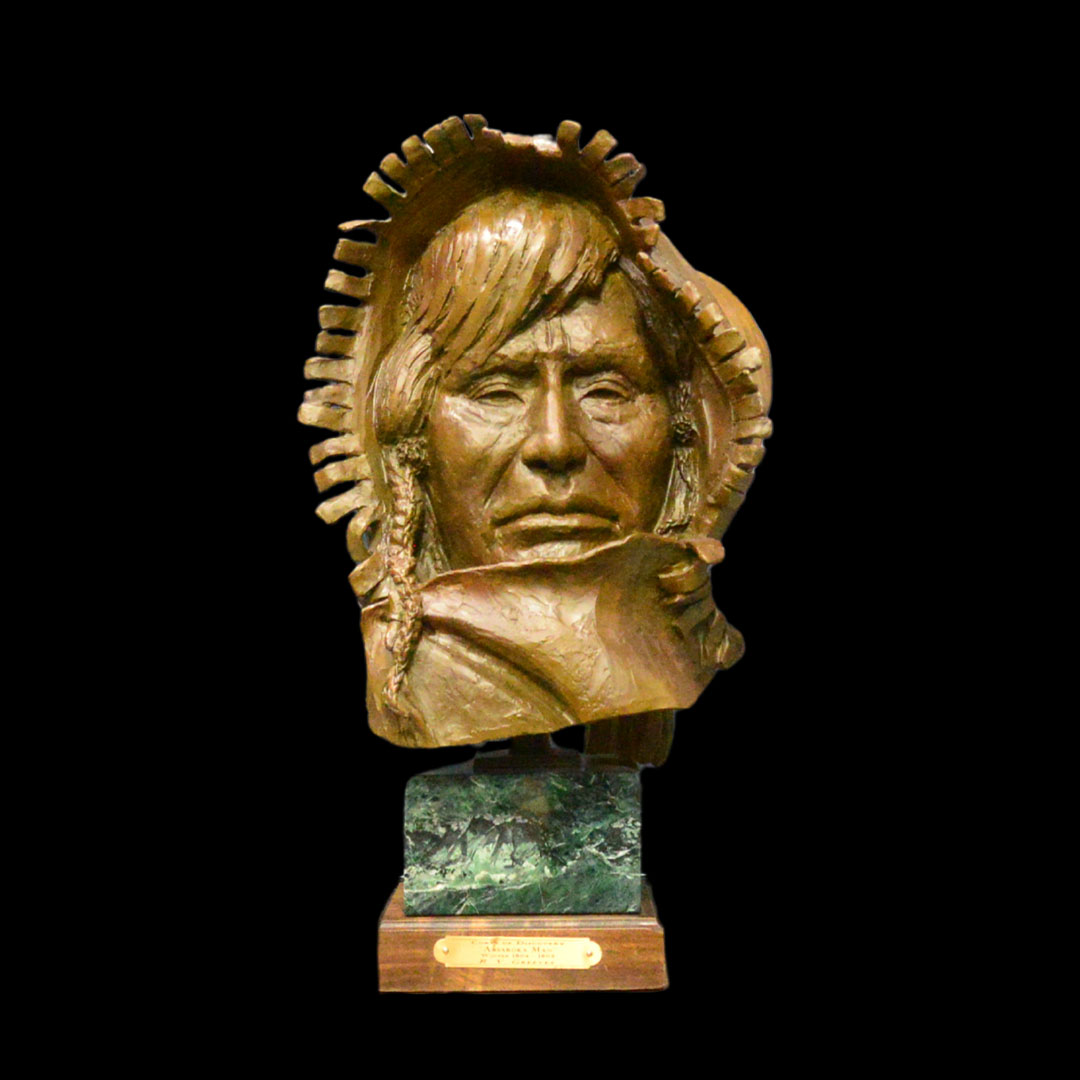The wind may cut, but he’s colder than the storm.
Richard Vernon Greeves
Contemporary

“Absaroka Man – Winter 1804–1805” by Richard Vernon Greeves is a powerful bronze bust that captures the resolve of an Absaroka (Crow) tribesman facing down the elements—and history itself. The figure is enveloped in a heavy buffalo robe, its fur edge flaring like a halo of frostbitten thorns. Only the piercing face emerges from the wrap, eyes narrowed, jaw set—not in defiance, but in sheer endurance.
The winter of 1804–1805 was brutal on the plains, and while the Lewis and Clark expedition sheltered at Fort Mandan, tribes like the Crow lived the cold with no walls, only instinct and adaptation. Greeves sculpts that reality—not as hardship, but as identity.
This piece is less about narrative and more about presence. The braided hair, weathered features, and rough textures speak of survival, sovereignty, and stillness under pressure. It is the face of a man shaped by seasons, not centuries.